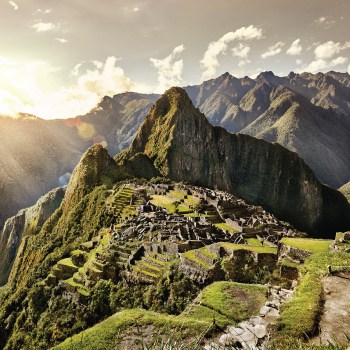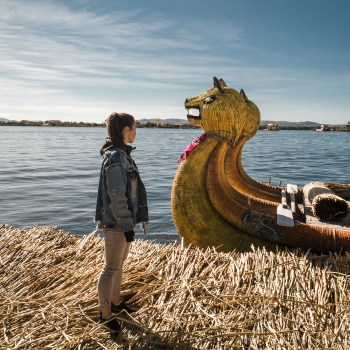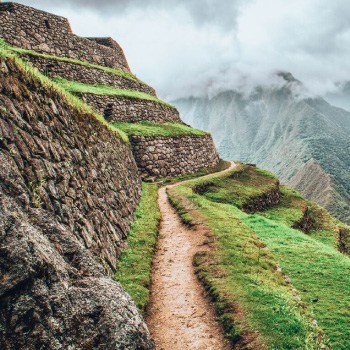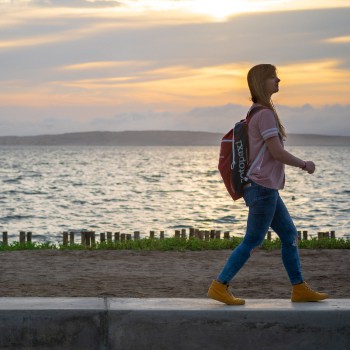Introduction
Wild, exotic, exciting and mysterious are but a few of the words that spring to mind when talking about Tambopata National Park. Located in the Puno and Madre de Dios regions of Peru, Tambopata has been established as a national reserve since 1990, and within it you can be opened up to an incredible hidden paradise. Flora, fauna, tranquility and ambience are in abundance as the park’s 5,500 hectares are home to a wealth of bird species, butterflies, plants, fish, reptiles and mammals.
In addition to the natural splendor of the area, human settlement along the Tambopata River can be traced back almost 4,000 years. Today, the direct descendants of the Ese ‘ Eja and Puquirieri peoples can still be found living in this particular part of the tropical rainforest.
Accessible from the nearby city of Puerto Maldonado, Tambopata National Park will treat you to the best of what one of the world’s most bio-diverse eco regions has to offer.
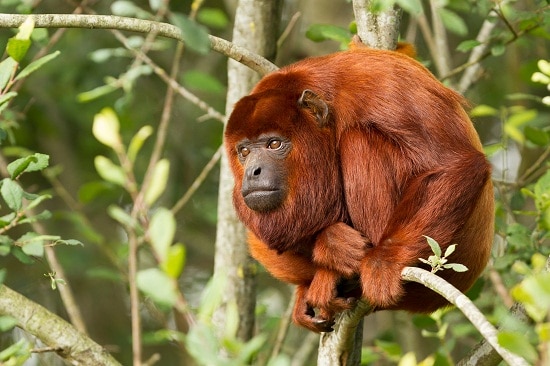
Red Howler Monkey
Wildlife in Tambopata
The first question many people are likely to ask when choosing what part of the Amazon basin to visit is “What animals will I see?” It is important to remember that this is virgin jungle and that we are merely visitors in the animals’ back garden. Statistically, however, Tambopata is home to 545 species of birds, 1,122 butterflies, 151 dragonflies, 103 species of amphibians, 103 reptiles and 169 mammals. It is, therefore, rich in fauna, and an ideal place for those wishing to spot a range of wild animals.
Based on visitor sightings, compiled by the Tambopata Research Centre, the bird family ranges from widespread to scarce. You are most likely to spot the scarlet, blue and yellow, and chestnut fronted macaws, while around half of visitors were said to have seen the Orinoco goose. The feathery hoatzin can either be abundant or non-existent, depending on what part of the national reserve you are in. Less likely to be spotted are the harpy and crested eagles, which were spotted by less than 10 % of visitors.
Among mammals, the capybara, aguti and white-lipped peccary are commonly found. You can also enjoy seeing (and hearing!) many members of the primate family, most notably the red howler monkey, brown capuchin monkey, spider monkey and the saddleback tamarin. You may even strike it lucky with the jaguar, tapir or puma, although in reality such creatures have only been seen by less than 5 % of eager visitors.
The reptile family of Tambopata National Park can also take your breath away. The white caiman is often seen as night falls, while there are also opportunities to spot the emerald tree boa, anaconda, South American bushmaster and Amazon river turtle.
Flora
Unsurprisingly, there is a wilderness of fabulous flora that can be admired in Tambopata. In one study, in fact, it was found that there were 150 types of trees in the same hectare. Some of the tree species include the cedar, rubber and moriche palms.
There are also over one thousand types of plants in the reserve. Among these, the Brazil nut is fairly prominent. As well as providing food for nourishment, many of the plants and trees have natural medicinal functions, among other uses.
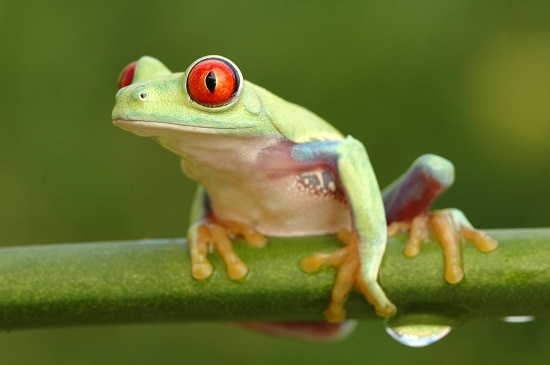
Tree Frog
Activities
There is a variety of activities that you can choose to do in Tambopata National Park, each providing a unique way of experiencing the wonderful wildlife the reserve has to offer. Our top recommendations include:
Tres Chimbadas Lake – This oxbow lake, formed when the meander was cut off from the main Tambopata River, contributes in a substantial way to the bio-diversity of the national park. With its still waters, it is the perfect habitat for creatures such as anacondas and black caiman. The amazing five-foot-long giant otter can also be found in these waters. Among bird life, Tres Chimbadas Lake is the only location for Hoatzins, while there is also a large presence of horned screamers. Visits to the lake can be organized through Posada Amazonas.
Macaw Clay Lick – An absolute must-do in Tambopata National Park, the macaw clay lick will take your breath away. The best place to do this activity is at the Tambopata Research Centre. With six species of macaw, hundreds of parrots and parakeets, the noise can provide as much pleasure as the visual experience. The birds rest on the trees above the clay lick and drop down to feed on the soil which is rich in minerals. The sheer volume of birds and beautiful tropical colours make this a highlight of a visit to the rainforest.
Jungle Farm Visit – This is a unique opportunity to visit some of the Esa-Eja families and sample life in the Tambopata farming communities. At these tropical farms, you can learn about the process of cultivating plants such as the papaya, yucca and banana. You get an insight into local life and learn about the plants and trees that are unique to the selva. You may also get the chance to participate in some of the harvesting of the various jungle fruits. Posada Amazonas provides excellent farm visits.
Jungle Night Walk – Peaceful, fascinating, mysterious. Whatever way you choose to describe such an excursion, the bottom line is a large portion of mammals, reptiles and insects emerge at nighttime in the jungle. This trend has evolved over time, as it makes it more difficult for birds of prey to hunt these creatures. In taking a jungle night walk in Tambopata National Park, you will witness the fascinating hidden world of night sounds. Your chances of seeing tree frogs and snakes will also increase significantly. Bizarre insects, night monkeys and even the famous jaguar roam the forest at night and, although you are not guaranteed to see the famous feline, there is certainly a great chance of catching a glimpse of a few creatures.
Brazil Nut Trail – What is surprising to some people is that the lands of Tambopata have been used by humans for thousands of years. The Brazil nut has been a source of food for those both in the region and across Peru for quite some time. It supports the livelihoods of many, particularly in the south of the country. Here you can learn how the seeds are harvested and used. You have the choice to participate in the harvesting of the nuts, should you wish. You can also test yourself as you try to crack one open!
Caiman Search – These creatures, who have evolved into nocturnal reptiles, can be found hiding in the long grass on the edge of a lagoon. Their red eyes are the only giveaway as you go in search of them under the young night sky. A boat ride in search of caimans is a thrilling experience and one not to miss out on in Tambopata National Park.
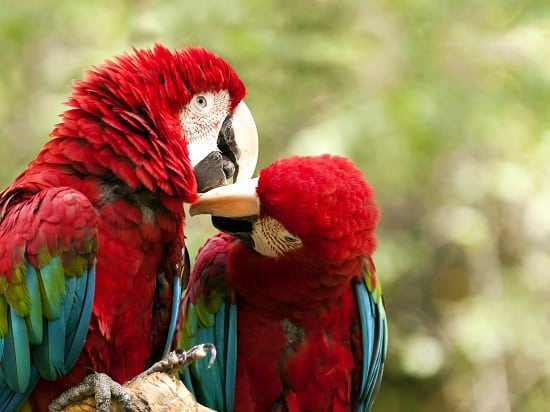
Red and Green Macaw
When to Go
There are a number of factors to consider when choosing when to visit Tambopata, the main one being the season. The dry season runs from about May to early November while the wet season runs from November until April. There are advantages and disadvantages to both.
During the dry season the jungle trails can be a lot easier to walk as the ground is not as soft. Temperatures are higher which can be both a good and a bad thing, depending on your tolerance for the heat. You are likely to see more birds at the clay licks at this time of year, although on really hot days there may not be much activity. Boats also tend to travel a lot slower during the dry season.
During the wet season waters rise significantly and, in theory, animals are spread over a smaller land area. It is also a better time of year to spot reptiles and amphibians, while bird activity may be higher with the cloudy conditions. However, naturally you can expect much more rainfall during this period. Mosquitos also tend to be unrelenting at this time of year.
In reality, the key factor for seeing animals is your guide. Therefore, choosing when to visit Tambopata should be based on your own personal weather preferences rather than what you think you will see.
Jungle Lodges
This is not Las Vegas! The region is a natural wonder and all the jungle lodges are designed to stay in keeping with the pristine surroundings. The accommodations are made from wood. Some have no electricity, while others provide a small amount per day. However, your basic needs are generally met, with comfortable beds surrounded by mosquito nets. There are no windows in these lodges. Rather there are bug screens to stop insects from entering.
Most people who stay in the jungle lodges are satisfied with the conditions. The best lodges for your stay in Tambopata include the following:
How to Get to Tambopata
The most popular way of getting to Tambopata is by flying to the city of Puerto Maldonado. LAN operates several flights per day from Lima to this destination. Most of the lodges have offices in Puerto Maldonado, where you will be received and can store excess luggage that you don’t want to take to the lodge. From here you are transferred by land and river to your jungle lodge, which generally takes between one and three hours.
Alternatively, you can take the bus. From Cusco, it is a ten hour journey (eight hours by car). For our safety, we would highly recommend flying to the Puerto Maldonado.
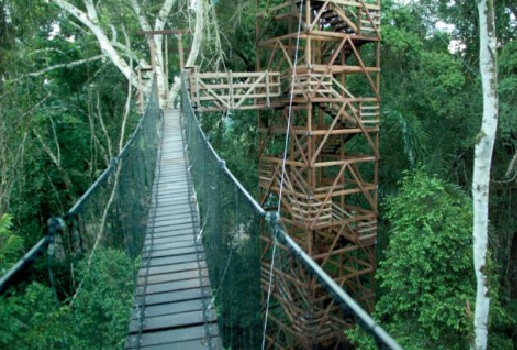
Inkaterra Amazonias – Canopy Walk
Puerto Maldonado
Situated just 55 kilometers (34 miles) from Bolivia, the city of Puerto Maldonado is the capital of the Madre de Dios region of Peru. The city’s main industries are tourism and boat building, which are closely related. It usually serves as a transfer point for tourists going to Tambopata and a lengthy stay in the city itself is not recommended.
Medication
There is a very low risk of contracting malaria in this part of the rainforest; there have been no reported cases in the last 15 years. However, it is always recommended that you consult a travel doctor prior to visiting any tropical region.
Although not a mandatory requirement for entry to Tambopata, a yellow fever vaccination is also recommended.
Always come prepared with diarrhea and headache tablets as you will be spending time in a remote region.
Clothing
In terms of clothing in Tambopata, and across the entire rainforest, the simple rule is light colors and material. Between body heat, humidity and rainfall, it is likely that your clothes will get wet during the day. It is not recommended that you take too many items of clothing with you. Therefore, a long-sleeved white shirt that will dry easily is ideal. Light, full length pants are perfect for the bottom half.
You should always have dry clothes for your cabin at nighttime so that, no matter how wet your daytime clothes become, you can stay comfortable in the evening.
The lodge usually provides you with your rubber boots. It is no harm to bring long socks with you to avoid constant rubbing and rashes. We also recommend a sun hat and sun glasses.
What to Bring
The essentials include sun cream, deet based insect repellant and depending on the lodge – toilet paper. After that it is your own personal preference. Some companies provide torches, ponchos and boots but it is no harm to double check in advance. A good camera and something to entertain you at night, such as a book or playing cards can add to the enjoyment!
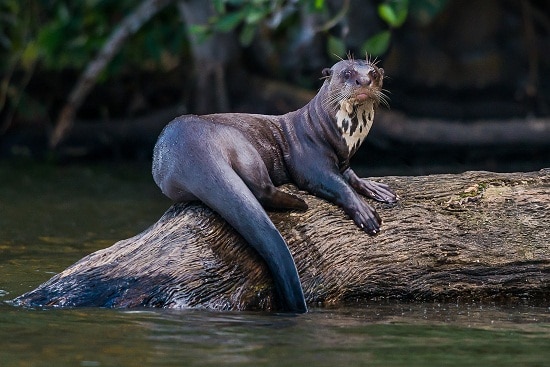
Giant Otter
Suitable for What Ages
Tambopata National Park is one of nature’s gifts and it is an experience that children would love. However, as a guideline, it is more suited to kids above the age of seven. Some lodges have policies on the minimum age which is worth keeping in mind. It is worth remembering that if your children become ill, you are a long way from a clinic or hospital.
If you are worried about being on the other end of the age scale, fear not! Lodges can be flexible on their activities. As long as you are adventurous at heart, you will love Tambopata regardless of age.
Food
Most jungle lodges include breakfast, lunch and dinner, and the standard of cuisine is quite high. Some lodges offer set menus, some offer buffets and lodges like the Inkaterra Reserva Amazonica offer an a la cart menu option. Vegetarian options are available, but you must inform the operator in advance.



